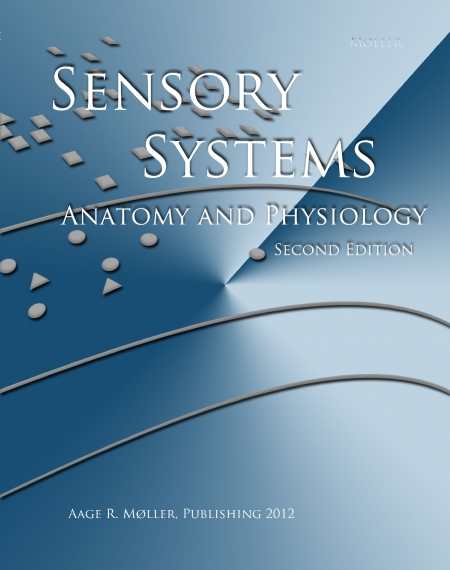Sensory Systems
Anatomy and Physiology
You’re attending a concert, and, as the sound of the music washes over you, you feel relaxed and happy. Do you ever wonder how this happens? How can sound waves traveling through a theater elicit such deep feelings of contentment?
Aage R. Møller offers answers to such questions. He has spent a lifetime studying and teaching topics like auditory, olfactory, and visual processing. In this updated second edition of Møller’s comprehensive textbook, Sensory Systems: Anatomy and Physiology, he consolidates his decades of experience as a professor of neuroscience at Karolinska Institut in Stockholm, the University of Pittsburgh, and the University of Texas at Dallas. Møller’s textbook seeks to explain how the senses obtain information, how the human nervous system processes the input, and how the outcome is experienced.
Writing for an audience of college-level science students and professors, Møller addresses sensory systems as a whole and then splits his text into five sections, one for each of the sensory pathways: taste, smell, sound, vision, and touch. Technical, information-packed chapters present the scientific material in several formats, including chapter summaries, tables, diagrams, and other illustrations that reinforce the text. Møller also provides a thorough set of references for further exploration.
Expanding on the conventional view that sensory processing is a linear process—a stimulus affects a receptor, provoking a particular response—Møller writes of sensory systems as dynamic systems with overlapping functions. He argues that the nervous system both detects physical stimuli and provides input into what he calls the “emotional brain,” allowing a person to synthesize and interpret the experience in context. This could explain why a violin solo is not experienced merely as a vibration but also as a profound pleasure.
Møller is an experienced and knowledgeable author, having published more than a dozen books and hundreds of research papers. He aims to appeal to a wide audience with multifaceted descriptions of various biological processes, but his use of medical language could quickly overwhelm the average reader. Those unfamiliar with an afferent nerve fiber and a trigeminal nerve are apt to get a bit lost in Møller’s scientific terminology. A glossary would have been a valuable addition.
Medical and advanced science students will benefit from this up-to-date edition of Sensory Systems: Anatomy and Physiology. Møller developed the text for use in the college classes he teaches, and it’s likely that other professors will appreciate this comprehensive resource too.
Reviewed by
Sheila M. Trask
Disclosure: This article is not an endorsement, but a review. The publisher of this book provided free copies of the book and paid a small fee to have their book reviewed by a professional reviewer. Foreword Reviews and Clarion Reviews make no guarantee that the publisher will receive a positive review. Foreword Magazine, Inc. is disclosing this in accordance with the Federal Trade Commission’s 16 CFR, Part 255.

